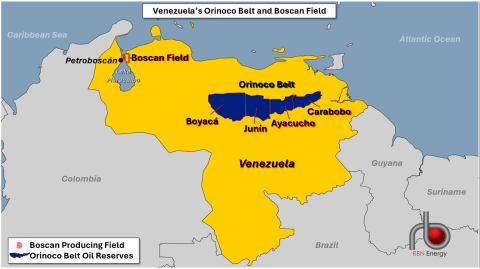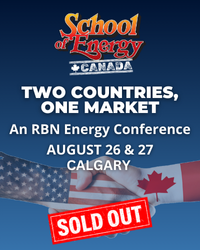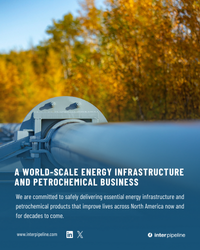Exports of Venezuelan crude to the U.S. have moved lower in recent months, a trend that seems likely to continue with the May 27 expiration of Chevron’s permit to operate there. But while a limited extension of that permit appears likely, if not yet official, the development adds new challenges for Gulf Coast refiners that process heavy crude. In today’s RBN blog, we’ll update the situation in Venezuela, assess what it means for Chevron, and discuss the outlook for the heavy crude-capable Gulf Coast refiners.
Let’s start with some background on Chevron’s long history in Venezuela, which dates back more than 100 years. Chevron’s legacy company, Venezuelan Gulf Oil, began drilling in 1924, spurring commercial oil production there, and followed that up with operations at Lake Maracaibo and the Boscan Field (tiny, pink-shaded area in Figure 1 below) in northwestern Venezuela. Then-President Carlos Andrés Pérez nationalized Venezuela’s oil industry in 1976 and established Petróleos de Venezuela S.A. (PDVSA) as the state-owned oil company, but despite the nationalization, Chevron remained, and it was asked to form joint ventures (JVs) with PDVSA. In 2006-07, then-President Hugo Chávez’s regime increased royalties and taxes on foreign oil companies and made other changes that prompted some companies — including ExxonMobil and ConocoPhillips — to leave Venezuela.
Figure 1. Venezuela’s Orinoco Belt and Boscan Field. Source: RBN
But Chevron hung on, attracted by Venezuela’s vast reserves and the ability to profitably produce oil at relatively low costs. By staying put, Chevron agreed to give up majority control of its operations to PDVSA. Still, it retained 40% interests and continued to be involved in several onshore and offshore projects, including Petroboscán in western Venezuela, while focusing on extra-heavy oil production in three blocks within the Carabobo area of the Orinoco Belt (blue-shaded area in Figure 1 above).
There have been other ups and downs for Chevron along the way, resulting in a mostly downward trend for Venezuelan crude exports to the U.S. in recent years (see Figure 2 below). The first Trump administration imposed economic sanctions on Venezuela in August 2017, which resulted in lower oil production and reduced exports to the U.S. The Trump administration followed that up with an April 2020 order for Chevron to wind down production in Venezuela, although exports to the U.S. had reached zero by that time. The Biden administration later reversed that order and eased sanctions further in October 2022, allowing Chevron to increase production for sales to the U.S. Imports began again in January 2023.
Join Backstage Pass to Read Full Article











